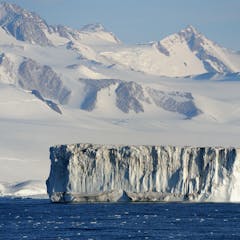
Articles on ENSO
Displaying 1 - 20 of 42 articles

NOAA issued its busiest preseason hurricane forecast yet, with the second highest accumulated cyclone energy. An atmospheric scientist explains what’s behind the numbers.

Option price swings show how much traders believe seasonal climate and weather matters for all sorts of industries, not just the ones you might expect.

After a year of record-breaking global heat with El Niño, will La Niña bring a reprieve? That depends on where you live and how you feel about hurricanes.

The 2023 megafires burnt more than 84 million hectares of desert and savannah in northern Australia. That’s larger than the whole of NSW, or more than three times size of the UK.

Weather forecasting is improving at a great rate, even though climate change could be making it tougher.

Heat is surging in the world’s oceans. Climate change and El Niño explain part of it – but not all.

El Niño can direct more warm water to the base of West Antarctic ice shelves, accelerating melting and increasing global sea level.

The strong El Niño that started in 2023 will still have big impacts at least through March. Here’s what to watch for next.

El Niño usually brings hot, dry weather to Australia. But the rains that have drenched eastern Australia are normal too.

An atmospheric scientist explains how El Niño works, this year’s oddities and why this phenomenon doesn’t last long.

It’s not just ocean temperatures that determine whether we have El Niño or La Niña. Air circulation also plays a role, and it’s changing in unexpected ways.

The bad news: Extreme heat is probably going to stick around for a couple of more years.

2016 was the world’s warmest year on record, due in part to a very strong El Niño event. But 2023 (and 2024) could beat that record – what should we expect?

The official forecast calls for a strong El Niño by winter, but other models suggest it might dip in and out. An atmospheric scientist explains.

Current forecasts suggest a warm tropical Pacific will be interfering with what could otherwise be a ferocious Atlantic hurricane season.

El Niño years put Hawaii and the Mexican Riviera on alert for destructive tropical storms and hurricanes.

Where there’s fire, there’s smoke – could plumes from the Black Summer of fire have cooled regions of the Pacific and triggered a La Niña? New research suggests it’s possible.

After three long years of rainy weather, La Niña is over. But that doesn’t mean El Niño is a certainty. Here’s why.

We can now monitor coastal changes across thousands of beaches over the last 40 years, from Australia, New Zealand and Japan, to Chile, Peru, Mexico and California. Here’s what our new tool uncovered.

On Australia’s rainiest days, more than 30 trillion litres can fall from the skies.





